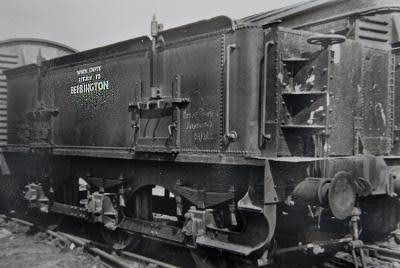 |
| Hilary Ash being filmed at the Butterfly Park |
Last weekend filming began to record some of the railway history behind New Ferry Butterfly Park.
 |
| Paul Loughnane being filmed at the Butterfly Park |
 |
| Paul Loughnane being filmed at the Butterfly Park |
In case you can’t wait for its release here is some of the story behind one area of the Park.
The lime waste area
Before we started the Park, Mel had found the concrete base and lime waste so we knew there had been a water treatment works to soften water for the steam engines.
 |
| Mel digging lime |
In the 1990s the pump house was still visible under a coat of ivy, near Bebington Road, in the grounds of the station master’s house (house since demolished). Water was taken from the borehole in the pump house, piped up the goods yard to the treatment works, where it was mixed with various chemicals, pumped to the top of the tall steel tower and filtered down through it. The tower had a small brick building alongside to house more of the works, whose footings we did find under the grass. The process was a standard one, the Kennicott water-softening plant.
 |
| Water softening plant |
The softened water was then mostly piped up to Rock Ferry where the main-line engines could be filled. Some was piped to a watering point on the main siding of the goods yard (now called the lime waste siding), where we found the base of the pipe, the “elephant’s trunk” (tanned leather pipe for filling the engine), and the valve to control it with its covers, one of them labelled “water”.
The waste from the process was a lime-rich slurry, which was mostly loaded into tankers (sometimes, as in one photo, old engine tenders) and taken off to farms for use as fertiliser.
 |
| Lime wagon |
If the waste got on the outside of the tankers during filling, it had to be washed off before leaving the yard, to prevent it washing down in rain and clogging the ballast of the main line.. But they left a lot of waste behind! - a layer of lime waste 30-50cms deep which has formed a calcareous grassland. When we lifted some turf with some schoolchildren in a science week project we found that there is a thin layer of soil, plant roots and worms – and apparently unchanged lime waste underneath. The yellow meadow ants make hills which are speckled white with the waste.
 |
| Cowslips flowering in spring |
The lime-rich soil that has developed on it allows a particular group of plants to grow, including cowslips in spring, marsh orchids in early summer, marjoram (a favourite of gatekeeper butterflies) and meadow cranesbill (much loved by bumble bees) in high summer and hoary ragwort in late summer (good for insects to feed on before hibernating). This area forms a major nectar and pollen source for our invertebrates from April to August.
 |
| Marjoram providing nectar in the summer |

No comments:
Post a Comment